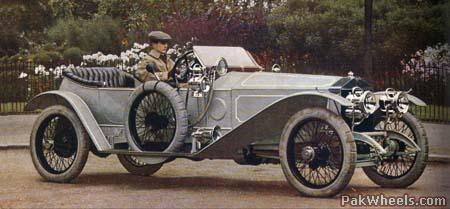

With cars like the "London-Edinburgh" (the one at the left is chassis 1958 by Holmes of Derby in the style of the L-E car), and later the "Alpine Eagle" (the car on the right is 17RB, by Portholme Coach Works, sold to Capt. Milburn by James Radley and a sister car to the one in which Radley won that year's Austrian Alpine Trial), the line from the radiator to the back of the body became more continuous. To my eye, the London-Edinburgh style was more elegant because the line from the radiator, along the bonnet hinge and scuttle, and along the body top was more pronounced than in the Alpine Eagle, but the latter's higher body sides gave better passenger protection. The balance between practicality and elegance is a hard task - one has to suffer to be beautiful...
This stage, just before the First World War, when a smooth line could be drawn from the bonnet side hinge along the scuttle and the body top rail (or lower edge of the waist moulding on a closed car) was the point where I believe truly elegant cars appeared. Although some designs aligned the bonnet centre hinge, scuttle top, and tops of the body waist moulding, this alone was insufficient for my idea of elegance. It was helped further if the line of the bottom of the bonnet (at the top of the chassis in cars of the 1920s) continued along the bottom of the body, giving a relatively narrow continuous strip of colour between the two. The line would be parallel with the straight running board, separated by a smooth valance concealing the chassis sides and brackets. The mudguards were fuller than Pre WWI designs, to control dirt better, but were still light in appearance. Totally parallel body sides would however look boring, so generally they would rise slightly around the body rear, and features like mudguards broke up the monotony too.